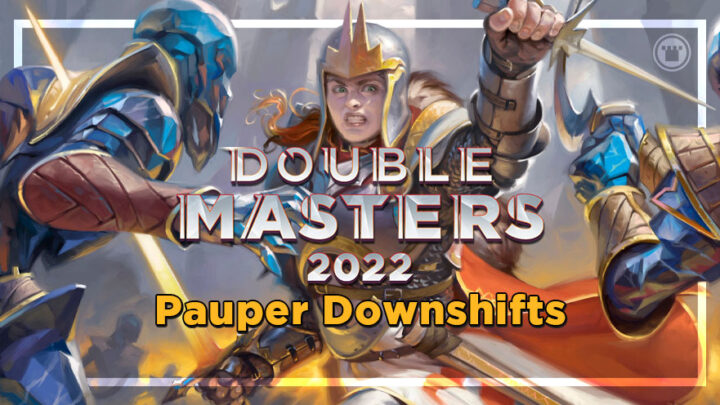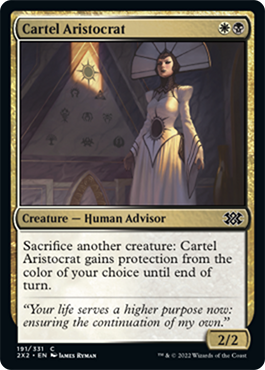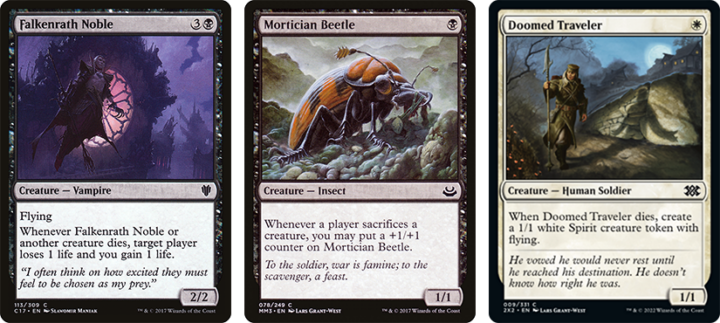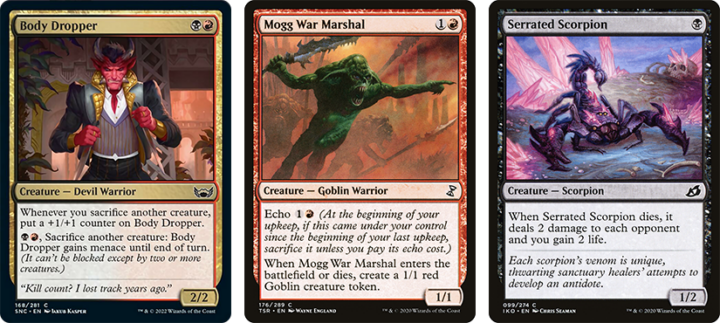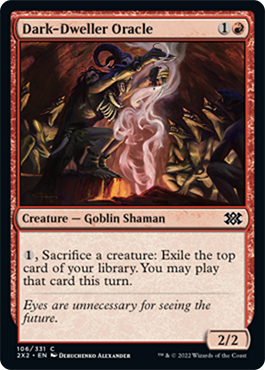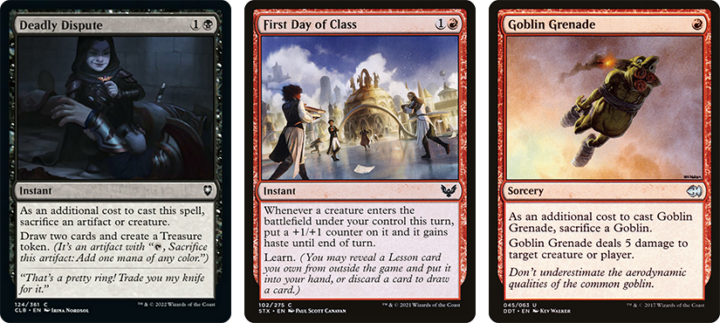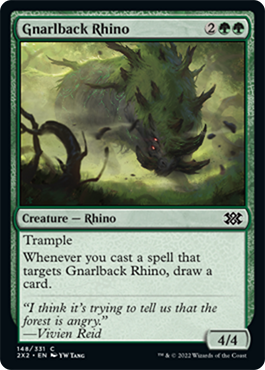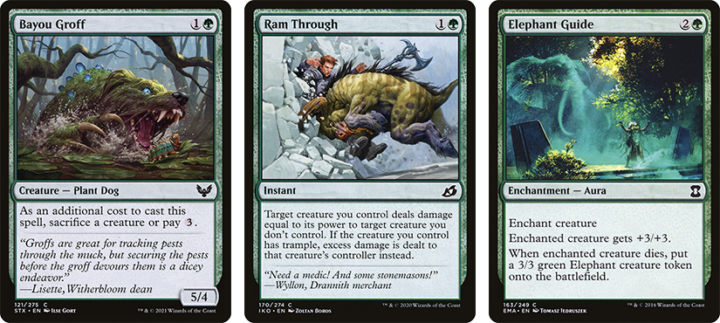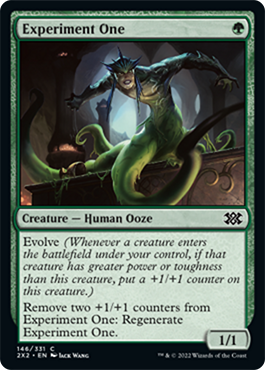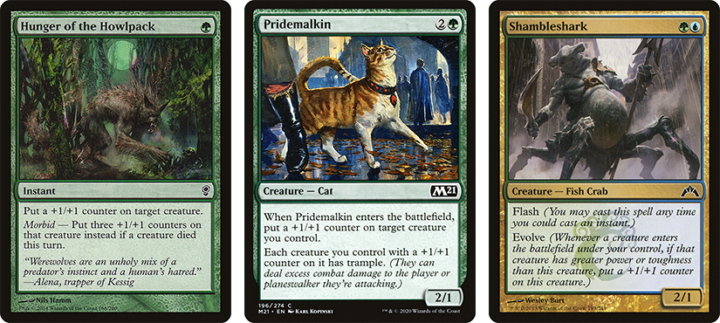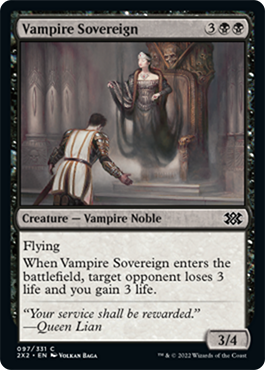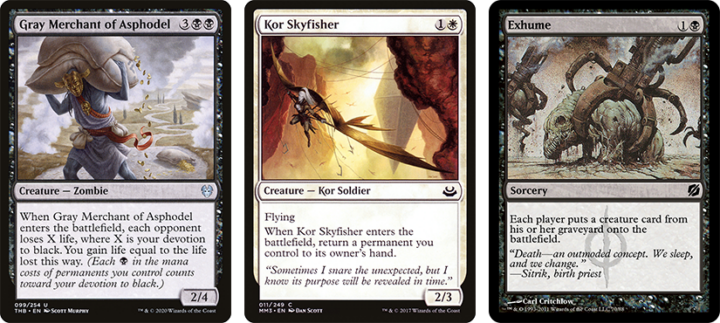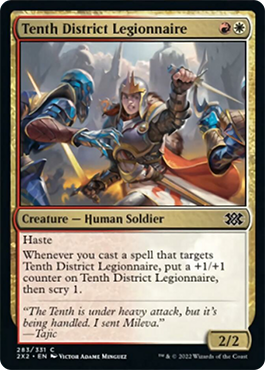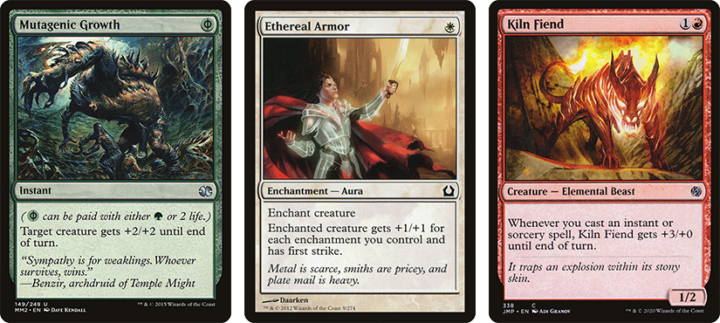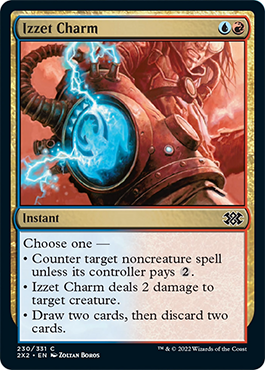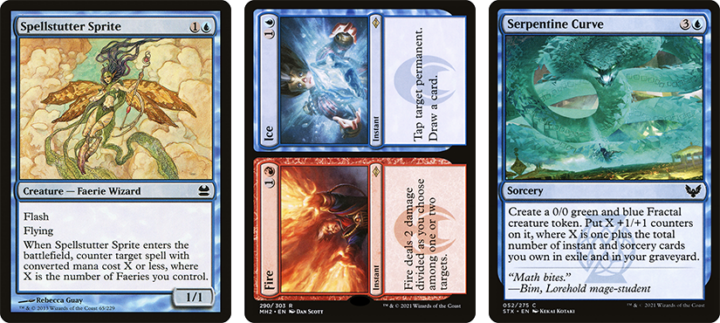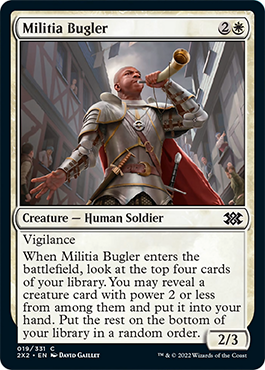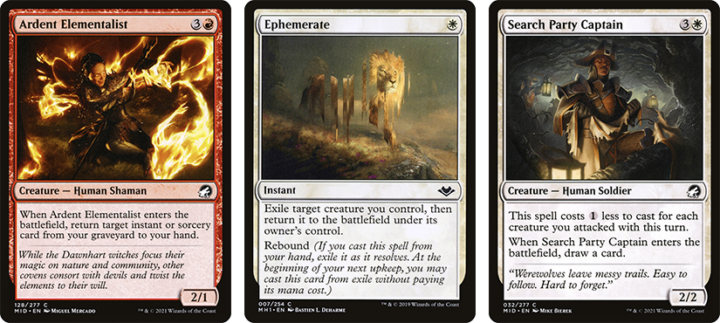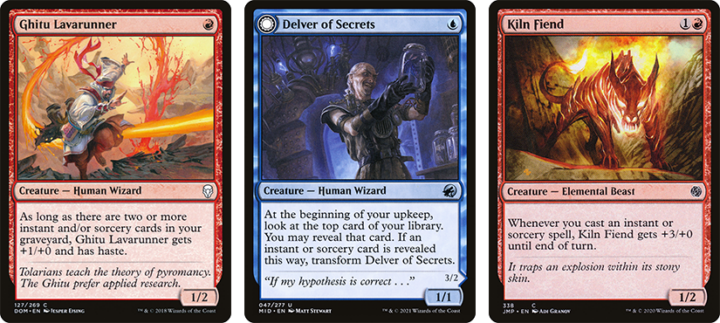Double Masters 2022 is shaping up to be an earth-shaking set for Pauper, and Scott takes a look at some of the most exciting rarity changes!
Double Masters 2022 is here, and with it come a slew of much-needed reprints for all formats. Many players are over the moon to see Imperial Seal’s first real reprint, Force of Negation’s reprint at rare, or to see classic Magic artists like Richard Kane Ferguson recreating iconic pieces. I’m excited about something a little more grassroots: Pauper Downshifts!
Every Masters set has at least a couple of downshifts to the common rarity, and Double Masters 2022 is no exception. There have been a number of incredible additions to Pauper through this set, and that’s what I’m going to take a closer look at today. I’m going to cover the most impactful downshifts, why they’re good, and where you might see them in the future. So without further ado:
Cartel Aristocrat
Cartel Aristocrat is one of the original cards that spawned the Aristocrats archetype that is now beloved by many Commander players. The ability to sacrifice creatures at instant speed can be terrifying, especially when you have plenty of small creatures you can sacrifice for value. Viscera Seer and Carrion Feeder are already present in Pauper, but Cartel Aristocrat can protect itself from most removal, making it the more resilient choice.
There may be enough in the Pauper card pool now for a black-white Aristocrats deck, using Cartel Aristocrat and the other sacrifice outlets, as well as payoffs like Falkenrath Noble and Mortician Beetle. White also gives you access to the likes of Doomed Traveler and Hunted Witness, giving you a lot of extra potent sacrifice fodder. I wouldn’t be surprised to see this style of deck emerge over the coming weeks, especially since many players still reminisce about playing with Cartel Aristocrat back in Standard.
Fireblade Artist
Fireblade Artist is a more aggressive sacrifice card, and one that might stand to make an impact in the Pauper environment. Two mana for a 2/2 with haste is a fine rate, but its ability to sacrifice a creature to chip away at your opponent’s life total is what really sets it apart from the others.
While Cartel Aristocrat might spark the start of an Orzhov Aristocrats deck, Fireblade Artist is set to bolster an existing archetype: Rakdos Sacrifice. The deck already uses Body Dropper as a way to sacrifice creatures and pressure life totals, and Fireblade Artist will help with both of these functions. Mogg War Marshal works especially well with it, as you can stack the echo trigger so it happens after you sacrifice the goblin to Fireblade Artist. Serrated Scorpion is also ideal, as sacrificing it will result in your opponent taking a massive loss of 4 life. This is going to be a much more aggressive slant on the sacrifice archetype compared to the version with Cartel Aristocrat, which may prove to be the better option in time.
Dark-Dweller Oracle
Sacrifice decks really are doing well from Double Masters 2022, aren’t they? Dark-Dweller Oracle has been downshifted all the way from rare for the set; this isn’t something that happens often (the last ones were Balduvian Horde and Savannah Lions in Masters 25), so when it does happen, it’s worth investigating.
There might be a number of potential homes for this creature. The obvious place is in sacrifice decks, possibly alongside Fireblade Artist. Turning creatures into card draw has always been effective, and this would help embellish the effects of the likes of Deadly Dispute. It would also be great in the Goblin Combo decks; they run First Day of Class, Putrid Goblin, and Skirk Prospector to generate infinite mana, and then kill using Makeshift Munitions or Flamewave Invoker. Dark-Dweller Oracle can slot in here as a way to dig through your deck and find the pieces you need to win. Finally, it might also show up in aggro Goblins decks, as a way to dig for more action, most notably burn spells like Goblin Grenade or Lightning Bolt. I’m not sure if all of these decks will adopt this goblin, but we will certainly see a lot of them going forward.
Gnarlback Rhino
More expensive creatures need to fit a specific set of criteria in Pauper: they need to provide value when you play them, and they need to line up well against other big threats and removal. It may not look like it at first, but I think Gnarlback Rhino fits these criteria. If you use an aura, pump spell, fight spell, or protection spell on it, you’ll draw a card; these will give you that initial value you need. While using those spells, it can easily grow to be bigger than a Myr Enforcer, and outclass even a Gurmag Angler. The trample keyword is also relevant, which will let you punch through smaller creatures and threaten lethal faster.
It’s likely to be one of the biggest creatures on the board, and when you build around it, it will give you excellent late game grind potential. Mono Green Stompy has been on the downtick for quite some time, and going big might be what the deck needs to stay relevant. Young Wolf, Bayou Groff, and Hunger of the Howlpack is a neat little package that can easily transfer into this beefier version, and spells like Ram Through will help to close out games in no time. Pair that with auras like Elephant Guide and Rancor, and you’re well on the way to the second coming of Stompy.
Experiment One
It’s hard to not get excited about a new one drop, especially one that has proven itself in other formats. Experiment One has shown up in many aggro decks over the years, even as far back as Stompy in Modern, and has continually impressed with its ability to grow over the course of the game while protecting itself. It also uses +1/+1 counters, so you could make some synergies work there too.
If Mono Green Stompy does go bigger with Gnarlback Rhino, this could be a great one drop for the deck. It would synergize well with Hunger of the Howlpack, and even creatures like Pridemalkin, if you were to lean into the +1/+1 counter aspect. It’s also a great addition to fringe decks, like Simic Graft and Selesnya Counters, though it’s probably not enough by itself to propel them into the competitive metagame.
Vampire Sovereign
Vampire Sovereign is a phenomenally powerful creature that was first compared to Siege Rhino; this might have been an overstatement, but it’s still a powerful addition to Pauper. It might cost five mana, but it has an immediate effect, it’s an evasive threat, and it doesn’t die to Lightning Bolt. It also blocks virtually all fliers in the format, making it an incredible tool for grindy decks.
When this was first previewed as being downshifted to common, people immediately drew comparisons to Gray Merchant of Asphodel, and understandably so. Mono Black Control has used this as its primary finisher for years, and it has a higher ceiling than Vampire Sovereign. However, I think this card is better for a few reasons: it doesn’t need you to have a board state to gain its full value, it’s able to shut down Faeries in the air, and it closes games quicker through attacking. All of this leads me to believe that this will bring about the end of Gary in Pauper. It could also slot into the creature-heavy Pestilence decks, as it has a high toughness and can be replayed using Kor Skyfisher. It might also be a great target for Reanimator decks; Faithless Looting on turn one, followed by Exhume to return Vampire Sovereign is a very respectable start! I’m sure we’ll see this vampire making waves in Pauper before long.
Tenth District Legionnaire
There is a Ravnica micro-story that follows a Tenth District Guard rising through the ranks. They first become Tenth District Veteran, and then a Battlefield Promotion makes them into Tenth District Legionnaire. While a rarity downshift doesn’t seem very fitting with the flavor, it’s a welcome promotion for Heroic strategies in Pauper! It’s very aggressive, and it can easily grow out of control with the right support.
Mono White Heroic has been a long-standing deck in the format, and Mono Red Heroic has come and gone over the years, but there have been few reasons to run both colors in the one deck. Tenth District Legionnaire is definitely the kind of piece that’s been needed to take the best of both decks and turn them into something truly impressive. You have access to broken pump spells like Mutagenic Growth, which will cause Legionnaire to attack for 5 on turn two! You can take a leaf out of Mono White Heroic’s book and run auras like Ethereal Armor, or you can take Mono Red Heroic’s spell-based approach with Ancestral Anger and Brute Force. If you were to lean more into instants and sorceries, you can be a bit more explosive with creatures like Kiln Fiend. The final deck will likely be a mix of these two approaches, and hopefully will become the best of both worlds.
Izzet Charm
Izzet Charm has always been the flex spot of many Delver-style decks over the years, and now Pauper will be no different. Its power lies not in any individual ability, but in its flexibility; the three wildly different modes give it the ability to adapt to almost any situation, or simply help you dig for the right card. If you don’t need to hit something with a slightly more expensive Spell Pierce or Shock, then a slightly more expensive Careful Study will do just fine.
A couple of copies of this will likely show up in Izzet Faeries or Delver lists, as well as the Serpentine Curve decks. This will likely fight with Fire//Ice in the flex spot, and it will change based on the metagame, but I imagine Izzet Charm’s increased flexibility will give it the edge in most scenarios.
Militia Bugler
Militia Bugler was originally uncommon in Core Set 2019, and it has seen occasional play since then. It has shown up in Humans and Death and Taxes lists in Modern as a way to dig for threats, and to grind out against removal. The stats are very good for the rate, and vigilance can be very relevant, especially against aggressive decks. Most of the cheap creatures in the format have two power, so they’ll struggle to break past Bugler without wasting a burn spell on them.
This is a very flexible card, and could show up in a lot of homes. First, it’s able to find virtually any creature that’s already played in Boros lists, like Ardent Elementalist or Kor Skyfisher. It’s also an excellent Ephemerate target, giving you extreme digging power for very little investment. I can also see this as a great way to give Mono White Aggro a much-needed boost; most of the creatures in the deck die to Fiery Cannonade or Breath Weapon, so pairing this with value creatures like Search Party Captain will give it much better staying power. It may not be the flashiest creature in the format, but it’s going to be a real workhorse going forward.
Monastery Swiftspear
This is the card that needs no introduction. Monastery Swiftspear has shown up in healthy amounts in every single format that it’s been legal in. It’s the premiere one drop in Pioneer red decks, it has been a mainstay of Modern Burn and Prowess, and it’s even spearheaded the charge in Legacy Burn and Delver decks. Not many one-drops can say they’ve been as ubiquitous as Swiftspear, save for Goblin Guide, Delver, and Ragavan. It’s incredibly well-costed, the innate haste gives it immediate value, and it’s incredibly easy to trigger prowess several times a turn. I’d even go so far as to say that Monastery Swiftspear would be more powerful in low curve formats like Pauper than even Goblin Guide!
Burn has been short of a decent one drop to compliment Ghitu Lavarunner, but now that’s set to change drastically. This will surely propel Burn to being a top tier contender, but Monastery Swiftspear’s influence won’t stop there. The Kiln Fiend deck that’s brilliantly named “Hot Dogs” is absolutely going to want her, and any Boros Heroic deck will want this to lead the charge ahead of Tenth District Legionnaire. Even Izzet Delver might come back in force, using this as another cheap threat that can handle itself while you control the game. There are more potential homes for this incredible creature than any other card on this list, and I look forward to seeing the aggressive slant it puts on the format.
I hope this has been helpful in finding the best commons for Pauper from Double Masters 2022. This isn’t an exhaustive list of all the cards that were downshifted to common, but it covers all of the cards that are likely to have an influence on the format. If you think you have any other brews or decks that these cards might fit into, be sure to hit me up on Twitter to chat more about the format. Happy brewing!

Scott is an Irish content creator and the Head of Budget Magic for the Izzet League. He focuses on affordable decks in Pioneer, Modern, and Pauper, particularly ones that stray from the mainstream. When he’s not writing about his favorite decks, he can be found talking incessantly about them on Twitter and on The Budget Magic Cast.

